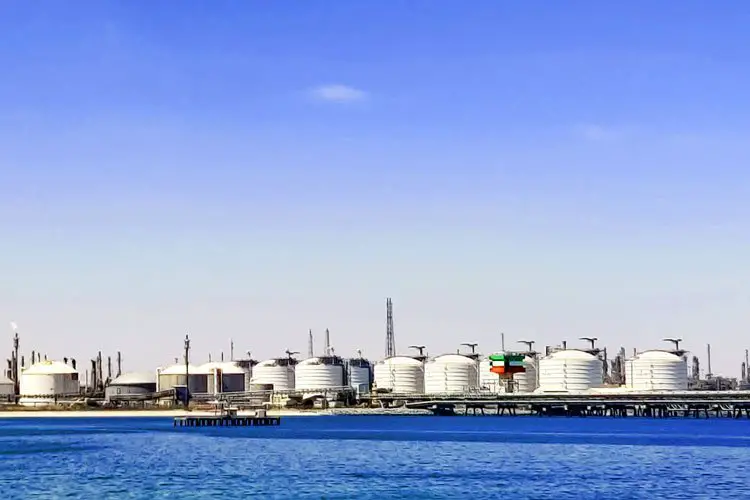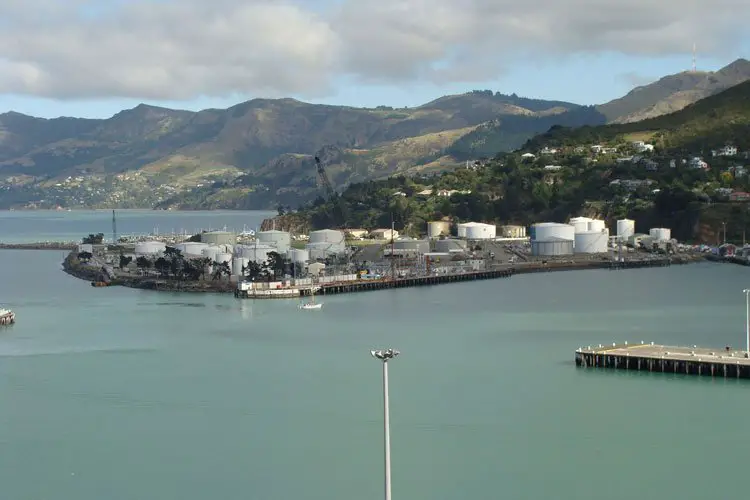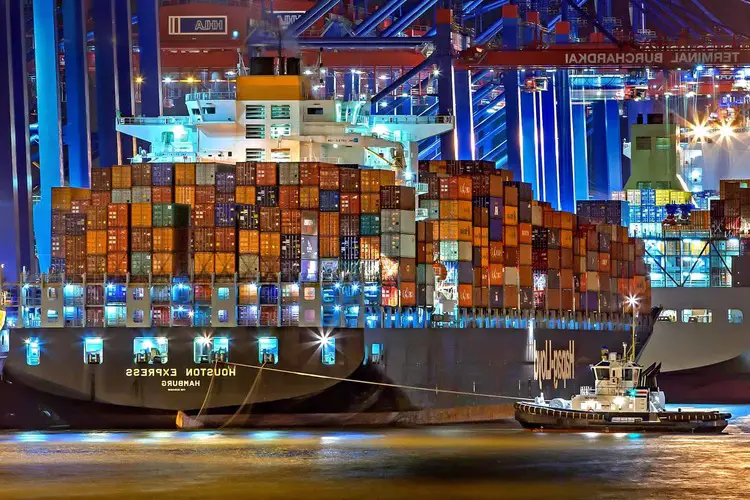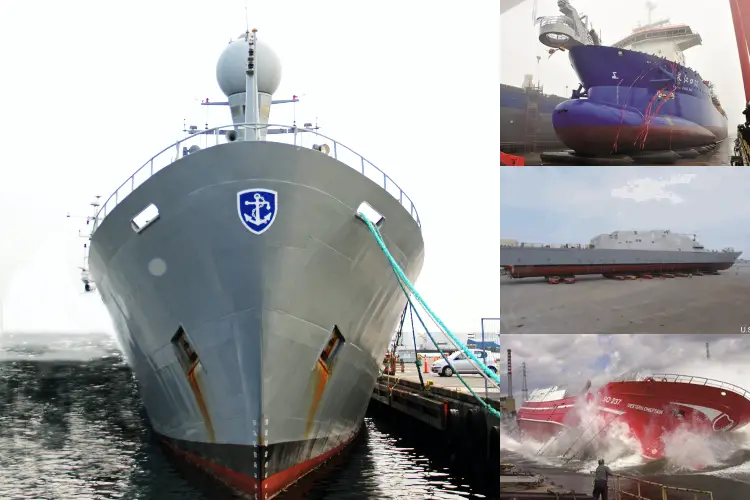What Are Oil Terminals?

What is an Oil terminal?
An oil terminal also knows as a tank farm or an oil depot is a location or facility dedicated to the storage of chemicals such as petroleum. It includes all of the area’s tanks and equipment. Before being distributed to end-users or retail outlets, liquid petrochemicals are kept in an oil terminal. When manufacturing or processing acid in various quantities and grades, oil terminals are also used. Corrosion and fire can cause damage to oil terminals, hence effective corrosion and fire protection are required. An oil terminal is also known as an oil store, installation, or oil terminal in the petroleum business.
An oil terminal facility consists of:
1) Above-ground or subsurface storage tanks
2) Gantries for dumping materials into road tankers, other vehicles (like barges), or pipelines.
3) These terminals are typically located near oil refineries or in areas where marine ships and tankers can load or unload their cargo. Some oil depots feature pipelines that allow them to draw petroleum products from rail, barge, and road tankers. Making it easier to move liquid goods from tanks is one of the criteria for choosing acceptable locations for oil terminals.
An oil terminal is typically easier, and in most situations, no additional processing or transformation is necessary on-site. To ensure that the liquid flows, additives are sometimes put into the tanks. Cathodic protection systems can be used to prevent corrosion in an oil terminal.
Also read: Different Types of Fire Extinguishers Used on Ships
Location of Oil terminals
Oil terminals should be located in the open, on one (or not more than two) sides of the process plant area. This configuration ensures proper segregation and enables the expansion of either the tank farm or the process plant at any time in the future. Because an oil terminal consists of a large number of heavy goods, it should be built on the good load-bearing ground; otherwise, extensive piling for the foundations may be required.
HSG 176 recommends taking into account the proposed storage’s distance from the site boundary and any off-site receptors, as well as on-site buildings, fixed ignition sources, and storage or processing of other dangerous substances or tanker transfer facilities when deciding where to put a single or multi-tank installation for flammable liquids. It also suggests thinking about whether the tanks are above ground or below ground, their size and capacity, and whether the roofs are fixed or floating.
Even if space is limited, oil terminals should be located above ground. Due to the difficulty of monitoring leaks, underground tanks are normally avoided. Even if they are permitted, they should not be used in process areas. Tanks should not be placed beneath structures, on roofs of buildings, in places raised unnecessarily high above ground level, on top of one another, or over tunnels, culverts, or sewers, according to the HSE.
Tanks should also not be placed within buildings, according to the experts. When there is a risk of an Unconfined Vapor Cloud Explosion (UVCE), fireball, or drifting poisonous cloud affecting the population, materials should not be kept near urban developments. If a rural component of the site is available, such installations should be placed there.
An oil terminal containing flammable materials should be enclosed by a zone where no ignition sources are permitted. This could be an electrical categorization zone established by vapor evaporation during filling.
A fire that starts in a process area or elsewhere on the property, whether inside or outside the oil terminal, shall not spread to the oil terminal. A fire in a tank or a spill inside a bund, for example, should not spread to nearby plants or structures, burn vegetation, or injure employees or the general public. These parameters will aid in the location of oil terminals on the property.
For smaller plants, storage tanks can be independently installed and sited to fit the flow arrangements. Separation is required to accommodate ignition and fire dangers, as well as toxic cloud drift, according to general principles. Unauthorized access to the oil terminals should also be prevented.
Also read: What Is Bunkering In Ships?
Necessary safety precautions at Oil Terminal Facilities
Natural resource storage, transportation, and distribution are all aided by terminal facilities. These terminal operators must take the required safeguards and conduct real-time testing methods to identify any defects or shortcomings in production assets before they cause downtime, spills, or other risks.
Multiple distribution networks funnel in and out of depots, which are often located near significant ports. Furthermore, terminals must be strategically located so that the requisite transportation infrastructure can reach destination cities while creating sufficient throughput to support additional downstream facilities such as utility firms and other end-users.
The inherent nature of the assets, materials, liquids, and high-risk operations involved in the normal operation of terminals creates a constant worry for safety concerns. Operators must conduct frequent safety assessments to limit the consequences of mechanical failures, whether it’s undiscovered leaks, corroded linings, or underperforming structural components.

Who owns Oil Terminals?
The ownership of oil depots falls into three main categories:
1) Single oil company ownership
When one company owns and operates a depot on its own behalf. For large international players, owning and operating their own depots is an additional potential option. Companies like Shell and Exxon use these terminals to supply oil to their various locations.
2) Joint or consortium ownership
In this two or more companies own a depot together and share its operating costs. This includes current technology as well as a grasp of trade, know-how, and shared functional prices, among other things. It is the preferred ownership structure for smaller oil companies that cannot afford to build a center on their own.
3) Independent ownership
Where a depot is owned not by an oil company but by a separate business that charges oil companies (and others) a fee to store and handle products.
The similarity among these three types of categories is that the owners of such facilities provide hospitability and pick-up rights to their other businesses.
Another type of ownership that is often included in the category is military ownership or military-owned terminals. These make use of a variety of oil products as well as terminals from commercial operations for security purposes. The facilities and procedures are the same as at other terminals, but the airplane or battleship gas will be customized for the craft’s engine and specifications.
Top 10 Oil Terminals Around the Globe
In 2018, the United States alone utilized an average of 20.5 million barrels of petroleum per day, according to the US Energy Information Association. This equates to over 7.5 billion barrels per year or roughly 22% of total global petroleum consumption.
As global economies and infrastructure continue to rely significantly on petroleum-based products, the world’s dependence on oil and gas is growing. Even with a weakening global economy and dwindling oil supplies, discussions of when the world’s oil and gas output would peak seem to remain on the outskirts. Indeed, the oil and gas business continues to hold enormous influence in international economics and politics, particularly when considering employment levels in the sector, which sustain at least 10 million jobs in the United States.
In the world, there are over 200 oil and gas firms. Traditional supermajors have faced severe competition in recent years from a rising number of National Oil Companies – state-owned corporations that are progressively obtaining monopoly rights to major oil reserves.
Biggest Oil companies in the world
In this list, we count down the biggest oil and gas companies in the world ranked by annual revenue.
1) Sinopec
2018 Revenue: $377 billion
Ownership: State-owned
Nationality: China
2018 Net Income: $9.1 billion
2018 Barrels per day: 4.88 million
2) Saudi Aramco
2018 Revenue: $355.9 bn
Ownership: State-owned
Nationality: Saudi Arabia
2018 Net Income: $111.1 bn
2018 barrels per day: 13.6 million
3) China National Petroleum
2018 Revenue: $324 billion
Ownership: State-owned
Nationality: China
2018 Net Income: $5.4 billion
2018 Barrels per day: 1.9 million
4) Royal Dutch Shell
2018 Revenue: $322 billion
Ownership: Public Limited Company
Nationality: UK-Netherlands
2018 Net Income: $23.9 billion
2018 Barrels per day: 3.7 million
5) BP
2018 Revenue: $303.7 billion
Ownership: Public Limited Company
Nationality: UK
2018 Net Income: $9.58 billion
2018 Barrels per day: 4.1 million
6) ExxonMobil
2018 Revenue: $241 billion
Ownership: Private Limited Company
Nationality: U.S.
2018 Net Income: $20.84 billion
2018 Barrels per day: 4.91 million
7) Total
2018 Revenue: $156 billion
Ownership: Public
Nationality: France
2018 Net Income: $13.6 billion
2018 Barrels per day: 2.8 million
8) Valero
2018 Revenue: $117 billion
Ownership: Public
Nationality: U.S.
2018 Net Income: $4.1 billion
2018 Barrels per day: 3.1 million
9) Gazprom
2018 Revenue: $112 billion
Ownership: Public
Nationality: Russia
2018 Net Income: $5.8 billion
2018 Barrels per day: 9.7 million
10) Phillips 66
2018 Revenue: $111 billion
Ownership: Public
Nationality: U.S.
2018 Net Income: $5.106 billion
2018 Barrels per day: 2.2 million
Additional mentions
1) Kuwait Petroleum Corp
2017 Revenue: $251 billion
Nationality: Kuwait
2) Lukoil
2017 Revenue: $114 billion
Nationality: Russia
3) Eni
2017 Revenue: $131 billion
Nationality: Italy
4) Pemex
2017 Revenue: $117 billion
Nationality: Mexico
5) Chevron Corporation
2017 Revenue:$129 billion
Nationality: USA
6) National Iranian Oil Co (NIOC)
2017 Revenue: $110 billion
Nationality: Iran



![Straddle Carriers [ULTIMATE GUIDE] 5 Straddle Carriers [ULTIMATE GUIDE]](https://www.maritimemanual.com/wp-content/uploads/2021/07/straddle_carrier.jpg)


